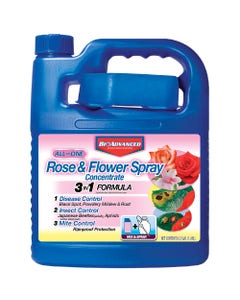

- Home
- Solution Center
- Learn
- Rose & Flower
- Landscaping With Roses
Landscaping With Roses
Dress your yard with the classic beauty of roses. New types of roses trade fussy growing techniques for easy-does-it culture that makes it a snap to incorporate these floral favorites into landscape settings.
Uses for Roses
As you consider tucking roses into your yard, think of them as players in the garden chorus – not soloists. Use them to interject season-long color into a perennial bed, pairing them with colorful companion plantings. Roses can interject color into perennial beds when other plants aren't blooming. Arrange roses to create a blooming hedge, or train one on an arbor to stage a showy entrance.
Roses that sprawl can easily hide an air conditioning unit or pool pump; upright shrub roses can handily disguise an unattractive fence. Showcase smaller roses in containers, or mass several roses of the same type to create a colorful impact.
Types of Roses
Choosing the right rose depends on what task you want it to perform. Roses fall into different classifications, and certain groups lend themselves to landscape use: shrubs, floribundas, miniatures, climbers and ground covers.
Shrub Roses. Size varies from tight and compact to large and sprawling. A rose can also grow to different sizes in different regions. Check with local sources to confirm size. Use Shrub Roses like traditional woody shrubs. Good winter hardiness. Best uses: specimen plant, in planting beds with perennials, foundation planting, screen.
Floribunda Roses. An ever-blooming rose with clusters of flowers. Plants tend to have an upright form. Good winter hardiness. Best use: hedges, entry gardens, containers – anywhere you want constant color.
Miniature Roses. Traditional rose blossoms in smaller size on smaller plants. In the garden, plants can grow 2-3 feet tall. Need extra winter protection; in coldest zones, cover plants with loose mulch (straw, chopped leaves, etc.) after the ground freezes. Best uses: edging, containers, mixed in perennial beds.
Climbing Roses. Add charm to any setting. Plants require more work and knowledge for effective pruning. Canes must be tied onto supports. Plants flower most heavily when canes are trained horizontally. Best uses: train on a building, pergola, trellis, fence or arbor.
Ground-Cover Roses. Plants can be tidy and restrained, or aggressive and sprawling. Best uses: edging planting beds or foundation plantings, covering a slope, cascading over a wall.
Tips for Success
- Choose wisely. Research the rose you're considering. Contact a local rose society or cooperative extension office to discover the best roses for your growing zone and conditions.
- Improve soil. Roses need well-drained soil that's rich in organic matter. Mix compost or other organic matter into planting beds and holes.
- Provide sun. Sunlight yields the best flowering. Take care when planting roses in new landscapes where trees are young. As trees mature, they may shade roses.
- Space properly. Roses planted too closely together are more susceptible to disease. You'll get the healthiest growth when you space plants correctly. Follow plant tag recommendations carefully, but a general spacing guideline is 3-5 feet apart for most landscape roses.
- Consider care. Roses are not the lowest maintenance plant you can add to the landscape. If you've never grown roses, try growing one or two before adding an entire bed.
- Water regularly. If you need a plant with low water needs, a rose is not the right choice for you. Roses require deep watering at least once a week. In the Desert Southwest, aim for twice-a-week watering.
- Think about thorns. Different roses offer differing levels of thorniness. Choose a less thorny type for areas where children play or guests might encounter a prickle (entries, near pools, beside benches, etc.).




__(1).jpg)









